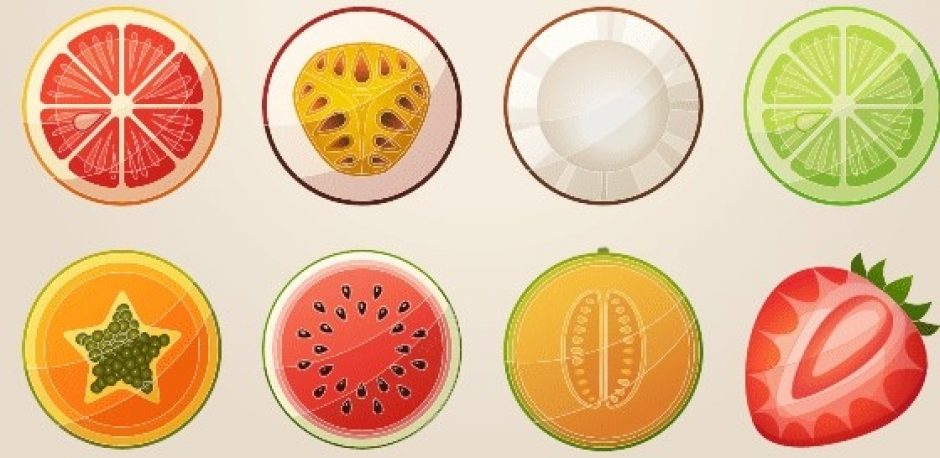How To Choose The Best Flavor For Your New Product

Flavor Descriptors & Flavor Profile
Variability Is A Given In Nature
Scientists agree that, at the molecular level, no two snowflakes are the same. This is because, during a snowstorm, water droplets pass through hundreds of levels of microclimates as they fall. As they do so it is highly unlikely that two falling flakes will take the very same route and experience the exact same conditions (temperature, humidity, wind and duration) while passing through the altitudes. Those changing conditions impact the final molecular structure of the snowflake.
Similarly, natural products (fruits, vegetables, herbs, etc.) exhibit variability based on their changing microclimates as they develop. Take for instance a strawberry. According to a recent report by the National Center for Biotechnology Information, strawberries are just as unique and complex as snowflakes because ‘during strawberry fruit development sucrose is continually imported from photosynthetic tissue, which initiates a complex network of primary and secondary metabolism specific to ripening strawberry fruit. Metabolic profiling indicates an accumulation of sugars, organic acids, and fatty acids as well as the consumption of amino acids during fruit development. The content of sugars, organic acids, amino acids as well as other soluble component[s] play a significant role in the overall flavor of fruit.” And this just speaks to the growth of a strawberry.
FLAVORIST SIDE NOTE: Aside from cost-effectiveness, stability and profile control, this natural variability is one of the major reasons why flavors are used versus natural juices, concentrates or extracts. This is because most flavor ingredients (aromatic chemicals, essential oils, etc.), be they naturally or synthetically derived, have far less variability than seasonally grown fruits, vegetables, herbs, etc.
Other factors such as when a berry is picked, how it is handled, cleaned, processed, packaged and finally prepared for consumption all contribute to the perceived flavor profile of a strawberry. Then there are consumer influences: their individual palettes, experience, culture, geography, health, age, and other individual characteristics that affect flavor perception.
When you mix the variability of strawberries with that of consumer perceptions, you can imagine that the range of flavor profiles for a strawberry flavored food or beverage is very broad. Articulating and choosing the best profile for a new product can be very challenging and important to the success of a product. So, how do you decide?
How To Use Flavor Descriptors to Choose the Best Flavor Profile
- For starters abelei suggests your development team work to agree on a descriptive model for the desired strawberry flavor profile of your product. This will require a list of descriptors for strawberry ( ie. ripe, seedy, sweet, jam-y, musty, green, fresh, floral, etc. ) and agreement on the definition of those descriptors. If there is a current market product whose flavor profile fits your target model, this is very helpful. A trek to a few stores or restaurants to find a product whose profile is ideal is usually time well spent.
- Next, choose your product specifications (ie. Natural, Non-GMO, Whole Foods Compliant, Allergen-Free, etc.) and communicate the description of the model flavor and targeted market product to your flavor provider. If they are like abelei, they will sort through a database of hundreds of strawberry formulas to identify the best two or three flavor formulas whose profiles and specifications meet your needs. Free samples of those formulas will then be sent for your evaluation.
- Sometimes one of those initial flavor samples will perfectly hit the desired target profile for your product application. However, it is also likely that none will, though one may come close and require fine-tuning to suit your purpose. Communicating how the closest flavor needs to be adjusted, using descriptors upon which your team and the flavor provider can agree, would be the next challenge, for how two individuals define/perceive fresh or floral usually differs. Again, here is where the example embodied in a targeted market product to which all have access and can taste, can be very helpful.
- If a couple of rounds of samples and conversations do not result in an acceptable profile and your budget/project potential justify it, you may consider spending a day or two working with abelei in its newly expanded and renovated laboratories. This will give both teams the ability to communicate and taste flavors in your product base face-to-face with full access to thousands of GRAS-listed ingredients and the expertise of flavorists, applications, sensory and analytical scientists employed by abelei. Usually, after a day or two of tasting, communicating and adjusting an acceptable flavor profile is crafted.
Pretty simple, right? In theory, it is but in practice the biggest stumbling block is getting all tasters to agree with the definition and example of the descriptors defining the target profile. This process will likely require some conversation, but if both sides can come to agreements (get on the same page / speak the same language), your path to your preferred flavor target will be relatively straight and gently downhill.
Flavor Descriptors Brochure
For a list of words used by abelei to describe popular fruit and sweet flavors, click here. Most people find this brochure very useful and refer to it often during their development process.
We hope the above flavor descriptor information and brochure are helpful to your New Product Development process. If you would like to discuss your flavor needs, please either call or email me, Troy Gooding, @ 847-924-5855, or tgooding@abelei.com, at your convenience.
For free flavor samples to jump-start your next project, you can click here to complete and submit your on-line flavor request. Samples are normally sent within a day or two of your request.
Flavorful regards
Troy